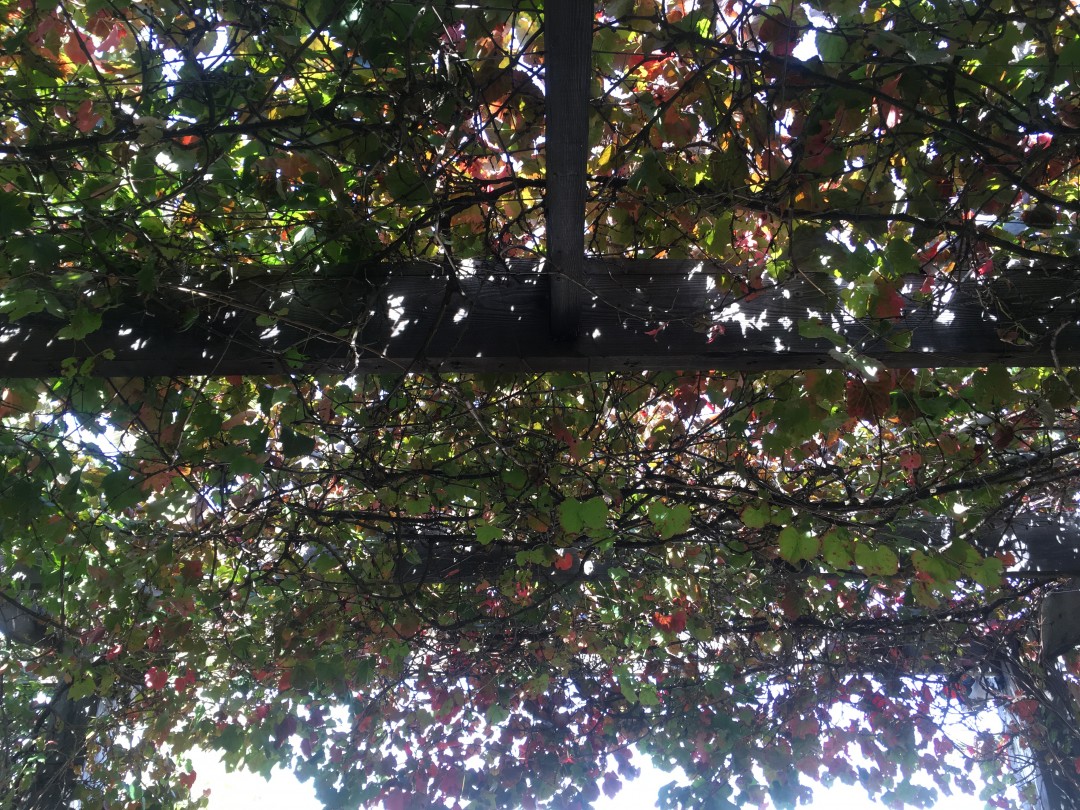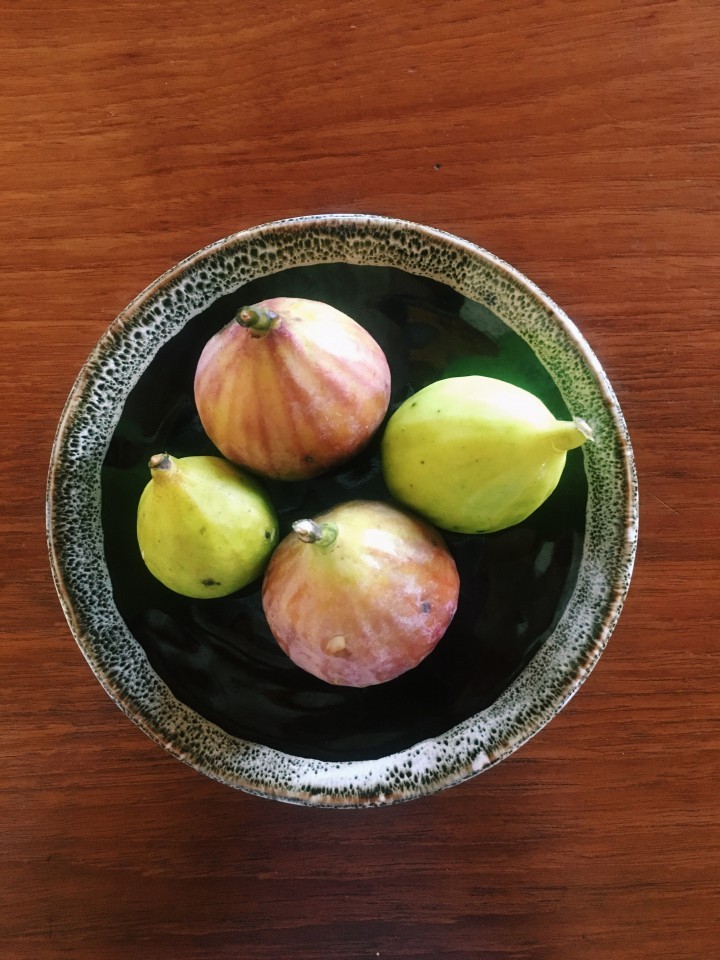
I wait for the wind to tell me that Autumn has arrived.
It comes in that shift from the warm Summer breeze that seems to tickle my soul, to the cold, even harsh, current of air that penetrates my bones.
Living in Byron Bay, it happens more subtly. The moisture coming off the ocean seems to temper the change of seasons. Though the surrounding flora blossom colourful berries and bright yellow flowers, there are no deciduous trees to really mark the Autumnal switch.
In my first year here, Summer just seemed to roll into Winter and it was only after a conversation with a tree-loving friend that I realised it was because I never saw an Autumn leaf! That oh so familiar sight of green turning red, then orange, and finally through to yellow, doesn’t occur in an Australian native environment.
So although Autumn officially commenced over a month ago, it took a trip to Melbourne for me to feel ready to write this piece. Having swum in a 26 degrees ocean the night before, touching down in the southern state provided a shock to my system that reached straight into the part of our body that feels Autumn the most – our skin!
Within 24 hours my otherwise soft and smooth complexion started to show little cracks, my moist lips went dry and red patches formed in those places I’m prone to irritation. It’s not only the green lush leaves that shrivel up, but us too!
Normally one to prepare for the transition in season, I was very unprepared this time round! The focus for my trip was on an event I was running and it didn’t quite occur to me to get my body ready alongside. Almost overnight I had to swap my eating habits and lifestyle choices to pacify a highly confused and quite frankly, pissed off, body!
The temperature change from Summer to Autumn can be one of the most challenging for us, so let me share with you now a few tips I’ve learnt along the way to help you adapt to some of the changes you may be experiencing.
A dry cool air characterises Autumn in most places; and the majority of us will either suffer from extreme dryness or its opposite, excess mucous and congestion. Both are connected to the function of our lungs and our immune system.
Our skin and other mucous membranes such as our nose, ears and genital areas are the first point of contact with the external environment. If they aren’t in good health, or well protected, our body will be more exposed to the pathogens that come with the cooler weather.
Autumn is the time to not only strengthen these orifices but also to not irritate them further. If you are a heavy smoker, drinker or drug taker, Autumn can be a better time than Spring to give yourself a break from these toxins. If you aren’t ready to stop, at least try some of the following suggestions to further support your system.
Rather than worrying about dosing up on Vitamin C, Zinc and other medications or supplements, selecting a variety of foods from Autumn’s bounty will ensure you are in good stead for balancing the energies of the season. If we just look for it, Mother Nature provides us with all we need to work with her seasonal changes.
One of the most important functions of our body during Autumn is to allow the energy to move smoothly around our organs and within our cells and particularly to the surface areas, when and if required. This can’t occur if our energy is sluggish, contracted or weak.
Consequently, you’ll tend to notice a variety of pungent vegetables come into season. Choose from white vegetables such as onions, garlic, turnip, cabbage, parsnip, leek, cauliflower, ginger, horseradish and mushrooms and you’ll be building your immune system with every meal.
At the first sign of a cold, it’s crucial to get our energy out to the surface area of our body with pungent foods, so why ginger tea or chicken soup spiked with onion and carrots are traditional remedies.
A tip I discovered during my illness was to have the ginger without the lemon; the latter is contracting in nature and may stop the energy from warming the extremities. Once you feel like the cold pathogen is out of your system, it’s then time to rest, drink the lemon teas and restore the energy on the inside of your body.
For those of us on the dry-side and needing a little extra moisture, you can’t go past the delicious array of Autumn fruits. Pears, persimmons, figs and apples are particularly good for stimulating fluids, as are some of the seasonal nuts, such as macadamias and pecans, that are beginning to fall from the trees.
As well as the drying of the skin, we tend to experience a drying of other bodily fluids, including our saliva. This can severely effect our digestive system and our ability to fight off pathogens that enter the body via our food. Stomach acid is our number one weapon against bacteria and is created via good saliva. This is where the recently popularised fermented foods, such as sauerkraut, come into play.
Spending more time in the kitchen taking in the aromas of freshly baked, sautéed and roasted foods provides a natural way to stimulate your salivary buds. After all, who of us doesn’t feel an overwhelming pang of hunger walking into a bakery?
Likewise, we all know we can start to salivate when we see something we desire; this concept equally applies to food, so staring down at a nicely plated dish can do wonders for our appetite!
To protect our mucous membranes we need foods bursting with Vitamin A such as eggs, golden orange vegetables and dark leafy greens, coated in a good quality saturated fat such as butter, ghee or coconut oil.
For me, two foods epitomise Autumn healing: butter and ghee (clarified butter). Having essentially saved me’ during my days of chronic illness, they not only protect your delicate mucous membranes but are essential short chain fatty acids that feed the good bacteria in your gut.
Whether you’re dry or congested, in all cases Autumn is when we need to start getting warm and cosy. It isn’t the time for green smoothies, juices and raw food. Rather it’s when we need to start to slowly rekindle our digestive fire for the colder winter months ahead.
For those needing moisture, warm soups, bone broths and porridges are the go; whereas for those needing to dry out, opt for more spices, ginger and chai teas and the healing chicken soup.
The less biting Autumn sun is also a wonderful source of immune strengthening Vitamin D, so try getting a 20 minute daily dose of these warming and delightful rays.
Lung congestion is not only caused by a toxic life and poor eating habits, but also by repressed long-term grief. Constipation, which may become exacerbated in this season, is often a literal build up of these emotions.
For those willing to take working with seasons a step further, Autumn provides us with a magical period to let go of unresolved sadness.
Without exception, as the season turns each year, I’m always provided with an opportunity to deal with a long-held emotion. For me, tears and Autumn are synonymous; I embrace and move through any sadness or suppressed feelings as I know Mother Nature is giving me the time to do so.
Cravings for hot and spicy foods are often a sign of contracted emotions. Pungent foods tend to move the stuck energy, but only temporarily. Feeling your emotions, physical movement and deep breathing are better ways to permanently deal with these. There is a reason why we feel better after a good cry or can breathe easier after a yoga or tai chi session!
Make the most of this season of letting go’ and you’ll be rewarded with a stronger immune system and be in good shape for the coming of the cold, still and more inward-focused Winter.
#This article is the second in a series of pieces on Eating with the Weather’; the first article published in February 2016 is on Attuning to the nature of late summer.






